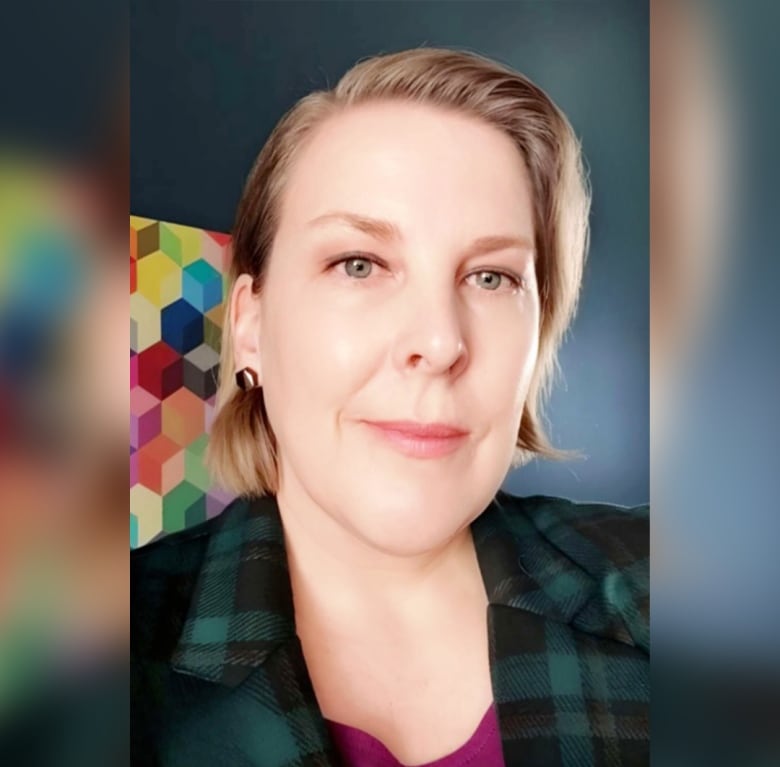
51:39Embracing neurodiversity in the workplace
When Rebecca Shaw was diagnosed with autism, she found it liberating. She says it helped her make sense of how her brain works, and the different way she thinks.
Shaw says she shared her diagnosis with her employer, and shortly after that lost her job. She got another similar position, and was terminated again, she believes because her manager found her accommodation needs too challenging. “Both times it was where I was obviously dissatisfied. I was struggling. I was asking for support, but not receiving support,” she said.

This is despite very valuable skills she brought to her workplace, such as her ability to problem solve and to see patterns in data. In her case, she says the HR department ordered accommodations for her at a corporate level, but her immediate manager didn’t see it as his “problem” to also manage.
“It really is an accommodation for all people to be aware of, including your colleagues and your manager and HR, which actually doesn’t work with you on a day-to-day basis.”
Shaw’s challenges in the workplace aren’t unique. People who are “neurodiverse” — the broad term used to describe people who have ADHD (Attention Deficit Hyperactivity Disorder), are on the autism spectrum, or have a disability that affects their ability to focus and keep things in working memory — often face additional challenges in a working environment, says Margaret Gibson, an associate professor of social development studies and social work at the University of Waterloo. They may also struggle with social behaviour and communication, she adds.
Neurodiverse people have long been unfairly accused of laziness or procrastination, but in reality they just have an atypical way of thinking — and it benefits both employees and the employer if neurodiversity can be accommodated, Gibson says.

According to the Centre for ADHD Awareness, Canada, around two million Canadians — or five per cent — have some form of neurodiversity. But experts say that in reality, that number is likely higher. And if you have a neurodivergent disability, you’re much more likely to struggle to hold down a job, according to the agency.
For those who do have a job, performing daily work tasks and communicating with colleagues can be a major source of anxiety.
Many neurodivergent adults try to hide their diagnosis for fear of stigma, further increasing that anxiety, Gibson says.
“Workplace stress [among neurodivergent employees] is probably one of the biggest things that drives people to come in for counselling, and it’s just one of those things that builds on top of everything else that they’re already coping with in their life,” said Dori Zener, a Toronto therapist who specializes in treating — and advocating for — neurodivergent adults.
“Being in a workplace of lots of people around can be very anxiety provoking, and it’s very overwhelming for their system — which makes it harder to learn and to focus and to work.”
Workplace challenges
For many neurodiverse adults, the actions that many take for granted — writing an email, sitting still in a meeting, engaging in general office chatter — can feel like insurmountable challenges, Zener said. Even the noise of an air conditioner can make it impossible to focus.
“We often work with our clients to advocate for incremental changes. So things like a private workspace or workspace where they’re in the corner, if it’s an open-concept space, so at least they have limited distractions. They can wear noise-cancelling headphones to block the noise, and be in a space with adjustable lighting,” she said.

But it’s more helpful if employers are able to better situate all workers in conditions that minimize anxiety. Gibson says that some workplaces have become very flexible, with team structures that allow people to work when and where they are most comfortable.
“In those sorts of settings, sometimes people can be neurodiverse without ever having to actually disclose it,” Gibson said.
“But if you’re in a more standardized kind of environment, where people are all expected to work in the same setting, work at the same times, work at the same pace, then you’re going to need more active institutional accommodation.”
What’s also critical, Gibson says, is the culture of a workplace, as there are a lot of unwritten, social expectations around employee interactions that can be a struggle for neurodiverse people. The social elements of work that are supposed to be fun — from potluck lunches to collegial banter — can end up being the most stressful, she said.
Inclusion for everybody
Both Zener and Gibson point out the COVID-19 pandemic showed that different workplace structures actually work. Companies are recognizing that it’s a win-win situation if they can match neurodiverse employees to tasks and environments in which they can thrive.
“We saw lots of [employers] suddenly saying, ‘maybe work that we thought had to be done face-to-face doesn’t always have to be done face-to-face,’ which was actually something neurodiverse people have been asking for for years,” Gibson said.
For example, some people work better in the evening, when it’s quieter. People who struggle to engage in social conversation might work better alone; others, who need that social interaction, might find a working at home too stifling.

For the past nine years, Tammy Morris has been the leader of the Neurodiversity Centres of Excellence at consulting company EY. She helps set company policy and advocates for neurodivergent workers.
The key, she said, is to make the workplace inclusive for everyone, so nobody feels singled out. This means all employees must have the opportunity to set their working conditions, so nobody has to disclose their neurodivergence —diagnosed or not.
“We really focus on universal or inclusive design across the workforce, so that whether or not people are open to sharing with us, we’re accommodating in our processes in how we work,” she said.
The company recently launched an inclusion program, that aims to “intentionally infuse neuro-distinct talent throughout ranks and roles all across the firm,” she said. Many neurodivergent workers excel at specific tasks; placing those workers in the right environment can turn a corporate challenge into a competitive edge, she added.
Being your own advocate
Initiatives like those at EY may be more difficult or too costly for smaller businesses, says Zener, which means neurodiverse employees must be clear about what they need to thrive.
She helps clients build a profile that examines sensory issues, social communication skills, and executive functioning.

“It’s a tool that the person can use, first and foremost to understand themselves better and to be able to put language to some of the differences and their experiences that they have,” Zener said.
“And then they can also use it as a tool in relationships to talk about themselves and with their employers as a jump start for advocacy as well.”
Shaw is now an advocate for neurodiverse people in the workplace. She’s doing her PhD, studying how late-identified autistic graduate students experience academic culture.
She says there are many resources available to help managers better understand the challenges neurodiverse workers face. “To rely on the employee themselves to teach you is a huge burden, in my mind, for a new employee.
“It’s important for a manager to be accommodating and understanding of what it means to be neurodiverse, including all the positive things that come with it, not focusing just on the deficit.”